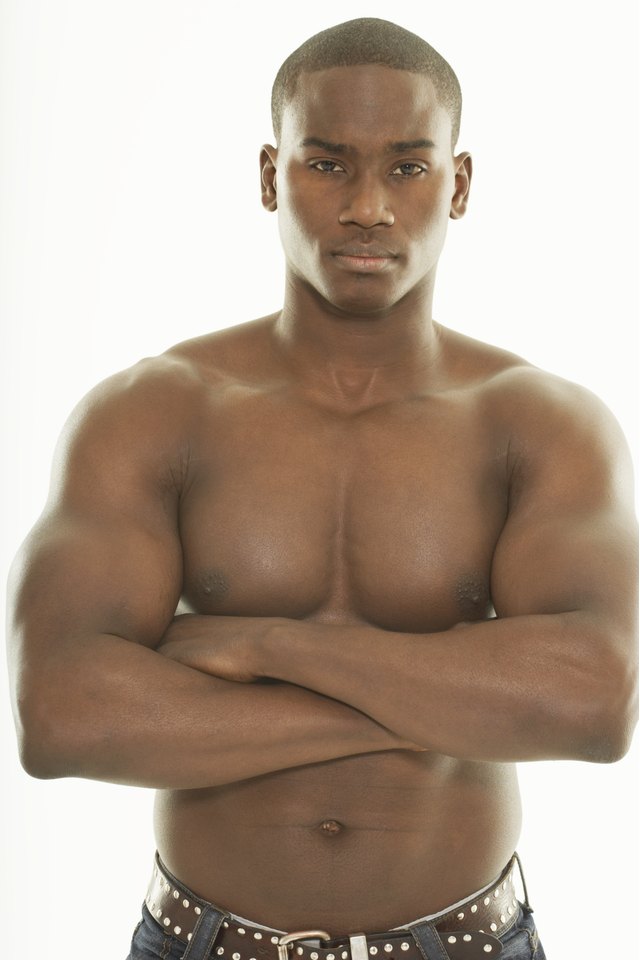List of Upper Body Muscles

The upper body comprises seven general muscle regions in the shoulders, chest and back. Each of these regions contains several muscle groups consisting of several muscle heads, or parts. The muscle regions also contain several individual muscles, which perform similar functions to the muscle groups and often act as assisting muscles.
Neck and Shoulders
The neck primarily consists of the sternocleidomastoid and the splenius muscles, which act to flex and extend the neck, respectively. The shoulders comprise four different muscles, two of which are muscle groups. The individual muscles of the shoulders are the upper trapezius and the levator scapulae, which function to elevate the scapulae, or shoulder blades. The muscle groups include the deltoids, which are made up of an anterior, medial and posterior head; and the rotator cuff, which is made up of the subscapularis, supraspinatus, infraspinatus and teres minor. Each of these two muscle groups performs a variety of functions. For example, the anterior deltoid acts to flex the shoulder, and the infraspinatus and the teres minor act to externally rotate the arm.
Chest
The chest region includes two muscle groups and one individual muscle. The muscle groups are the pectoralis major, which is made up of a clavicular and a sternal head, and the serratus anterior, which is made up of a superior and an inferior head. The pectoralis major as a whole acts to flex the shoulders in the horizontal direction. The serratus anterior acts to abduct, or protract, the scapulae. As for the individual muscle, the pectoralis minor, it also acts to abduct the scapulae.
Abdominals
The abdominals primarily consist of the rectus abdominis, an individual muscle, and the obliques, a muscle group made up of an external and an internal part. The rectus abdominis functions to flex the spine. The obliques function to flex the spine in the lateral direction.
Arms
The arms comprise two muscle groups and two individual muscles. The muscle groups are the biceps brachii and triceps brachii, which act to flex and extend the elbow, respectively. The two individual arm muscles are the brachialis and brachioradialis, which act to flex the elbow. As for the forearms, they primarily comprise the wrist flexors and the wrist extensors. The wrist flexors consist of six muscles that act to flex the wrist. The wrist extensors consist of eight muscles that act to extend the wrist.
Back
The back consists of many muscles which layer on top of one another. The deepest part of the back comprises the erector spinae, multifidus and quadratus lumborum, all of which act to laterally flex the spine. The erector spinae and multifidus also act to extend the spine. The other main muscles of the back are the rhomboids, middle trapezius, lower trapezius, latissimus dorsi and teres major. The rhomboids, middle trapezius and lower trapezius act to adduct, or retract, the scapulae. The latissimus dorsi and teres major both act to adduct the shoulders.
References
Writer Bio
Richard Choueiri is a fitness and nutrition expert and the author of "The Human Statue Workout." He began writing professionally in 2007 and his work has been featured in Bodybuilding.com and "Physique Magazine." Choueiri studied exercise science and nutritional science at Rutgers University. He holds an American College of Sports Medicine CPT, and a National Exercise and Sports Trainers Association CMMACC.
